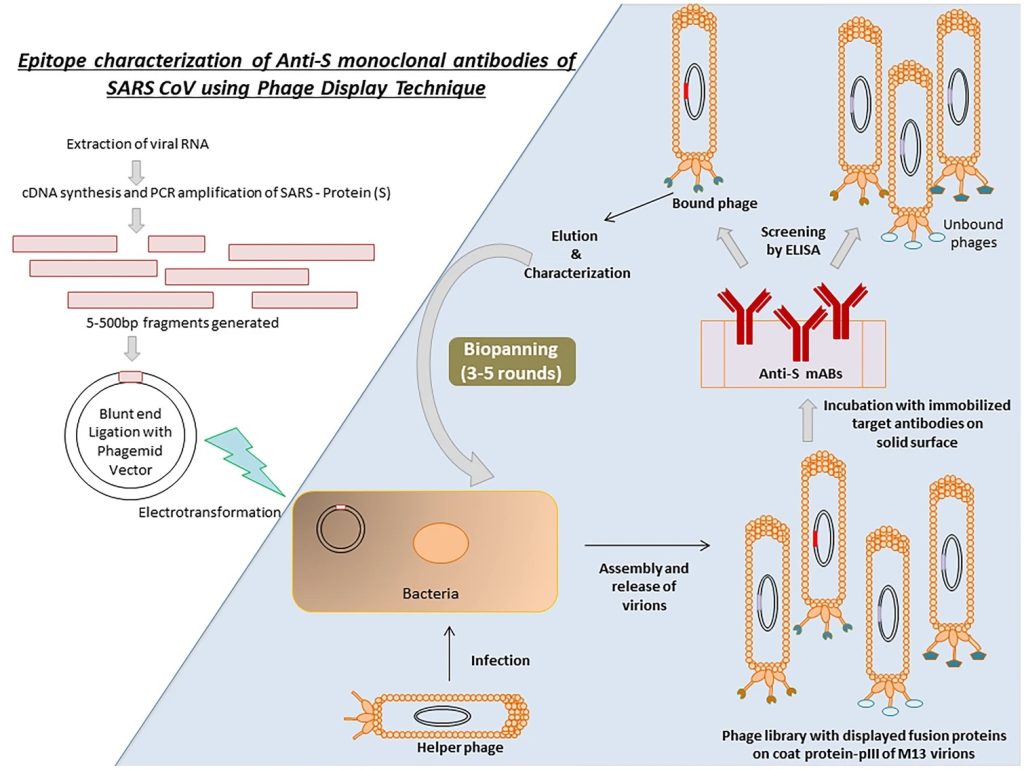The therapeutic efficacy of antibodies is closely related to their ability to recognize and bind specific epitopes on target antigens. Epitopes, or antigenic determinants, are a group of amino acids or other chemical groups that are part of a molecule to which an antibody attaches itself. Epitope characterization can help reveal the mechanism of antibody binding and apply intellectual property (patent) protection for novel antibodies, in addition to designing antibodies with high specificity and minimal cross-reactivity. Thus, understanding the nature of these epitopes will assist in developing effective antibody-based therapies.
The Role of Epitopes in Antibody Functionality
Antibodies, or immunoglobulins, exert their therapeutic effects primarily through the specific binding to antigens, which are often proteins associated with pathogens or diseased cells. The binding site on the antigen, known as the epitope, determines the specificity and strength of this interaction. There are generally two categories of epitopes: linear and conformational. Linear epitopes are short, continuous sequences of amino acids that are usually flexible and can adapt their conformation to form weak interactions with a complementary antibody. Conformational epitopes are formed by amino acids brought together by the protein’s three-dimensional structure, adjacent to the structural surface of the protein after folding.1
The affinity of an antibody for its epitope is a key determinant of its therapeutic potential. High-affinity interactions ensure robust binding, which can enhance the antibody’s ability to neutralize its target or recruit immune effector functions. Conversely, low-affinity interactions may result in suboptimal therapeutic outcomes. Epitope specificity is essential for minimizing off-target effects and ensuring that antibodies selectively target pathogenic cells without affecting healthy tissue. However, epitopes that are highly conserved across different proteins can lead to cross-reactivity, where an antibody binds to unintended targets, potentially causing adverse effects.
Methods for Epitope Characterization
Epitope characterization methods often depend on the functional binding of antibodies to the antigen or its fragments. One approach involves narrowing down the epitope location by testing the antibody’s ability to bind to antigen fragments. Binding assays like ELISA, dot blot, or Western blot can then help identify the epitope’s position within the overall structure of the antigen.2
Meanwhile, epitope mapping is the process of experimentally identifying the epitope on its target antigen. X-ray crystallography can provide detailed structural information about antibody-antigen complexes at atomic resolution. By determining the three-dimensional structure of these complexes, researchers can precisely identify the epitope regions and understand the molecular basis of antibody binding. Although this method offers high accuracy, it is technically challenging and requires the crystallization of antibody-antigen complexes, which is not always feasible.
Cryo-EM has emerged as a complementary technique to X-ray crystallography, especially useful for studying large protein complexes and those difficult to crystallize. Recent advances in cryo-EM have significantly improved its resolution, allowing for detailed visualization of antibody-epitope interactions. This method is particularly advantageous for analyzing conformational epitopes and dynamic interactions.
Several other approaches can be employed for epitope mapping, each with their own advantages and limitations:
- Peptide Scanning: This involves synthesizing overlapping peptides spanning the entire antigen sequence and testing their binding to the antibody. It is effective for identifying linear epitopes but not for conformational epitopes.
- Mutagenesis Studies: Site-directed mutagenesis can be used to systematically alter amino acids within the antigen and assess the impact on antibody binding. This method helps identify critical residues within both linear and conformational epitopes.
- Surface Plasmon Resonance (SPR): SPR measures the binding kinetics of antibodies to immobilized antigens in real-time, providing insights into the affinity and specificity of the interaction. By analyzing various antigen variants, researchers can infer the epitope regions.
Implications for Therapeutic Development
Detailed knowledge of epitope structure and characteristics enables the rational design of therapeutic antibodies. By targeting epitopes critical for the function or survival of pathogens and cancer cells, researchers can develop antibodies with enhanced therapeutic efficacy. For instance, antibodies designed to target conserved epitopes on viral proteins can be effective across different strains, offering broad-spectrum antiviral activity. Likewise, antibodies targeting different epitopes on the same antigen can at times have opposing effects.3
Epitope characterization also informs the engineering of antibodies to improve their properties. For example, altering the antibody’s Fc region to enhance interactions with immune cells or modifying the binding site to increase affinity and specificity can significantly enhance therapeutic outcomes. Additionally, bispecific antibodies, which recognize two different epitopes, can be engineered to improve targeting and efficacy against complex diseases like cancer.
- Lo, T., Shih, C., Pai, W., Ho, P., Wu, L., & Chou, Y. (2021). Conformational epitope matching and prediction based on protein surface spiral features. BMC Genomics, 22(Suppl 2). https://doi.org/10.1186/s12864-020-07303-5
- Ahn, S., Kim, S., Park, Y. J., Park, Y. K., Kim, H. D., & Kim, J. (2021). Production, characterization, and epitope mapping of monoclonal antibodies of ribosomal protein S3 (rpS3). Animal Cells and Systems, 25(5), 323-336. https://doi.org/10.1080/19768354.2021.1980100
- Goulet, D. R., & Atkins, W. M. (2020). Considerations for the Design of Antibody-Based Therapeutics. Journal of Pharmaceutical Sciences, 109(1), 74. https://doi.org/10.1016/j.xphs.2019.05.031

